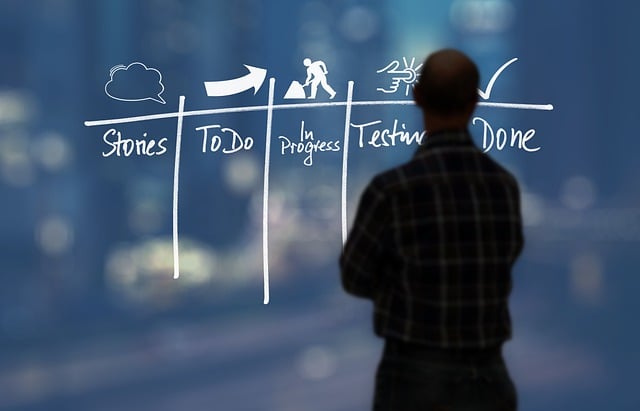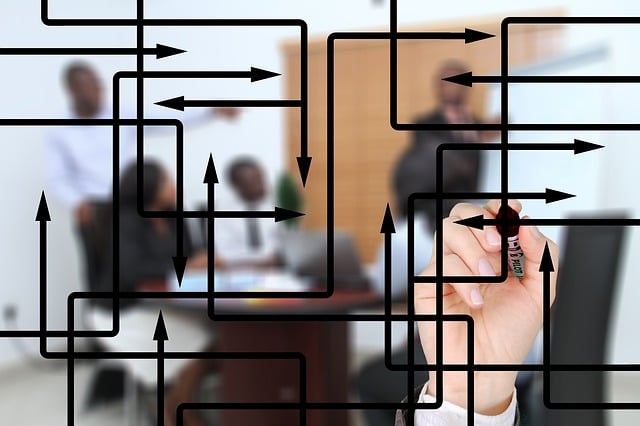Workplace sustainability initiatives like 5S training and process standardization go beyond environmental efforts, promoting efficiency and responsibility through lean management principles. This philosophy, encompassing sorting, setting in order, cleaning, standardizing, and sustaining, enhances productivity while reducing waste and energy consumption. Benefits include improved employee morale, safety, quality control, and a culture of accountability integrating sustainability into daily operations. 5S training, as a powerful strategy for workplace organization, drives operational excellence by adopting lean management principles, streamlining workflows, minimizing errors, promoting engagement, and contributing to a more sustainable business model.
Workplace sustainability initiatives are more than just a trend; they’re essential for modern businesses aiming to thrive in an ever-changing world. By implementing strategies like 5S training for optimal organization and integrating lean management techniques for continuous improvement, companies can achieve long-term success. This article explores these key approaches, providing insights into how process standardization acts as a cornerstone for sustainable growth. Discover the basics, benefits, and practical steps to create an eco-friendly, efficient workspace.
- Understanding Workplace Sustainability Initiatives: The Basics and Benefits
- Implementing 5S Training for Optimal Workplace Organization
- Integrating Lean Management Techniques for Continuous Improvement
- Standardizing Processes: A Key Strategy for Long-Term Sustainability Success
Understanding Workplace Sustainability Initiatives: The Basics and Benefits

Workplace sustainability initiatives are more than just environmental efforts; they encompass a holistic approach to creating efficient and responsible workplaces. At their core, these initiatives aim to balance operational excellence with ecological stewardship. One proven method is adopting principles like 5S training—a lean management philosophy that promotes workplace organization through sorting, setting in order, shining (cleaning), standardizing, and sustaining. This system not only enhances productivity by streamlining processes but also contributes to a greener environment through reduced waste and energy consumption.
The benefits extend beyond sustainability. Efficient workplace organization through 5S and continuous improvement practices like process standardization lead to enhanced employee morale, increased safety, and improved quality control. By focusing on these methods, organizations can foster a culture of accountability where every action, from daily tasks to long-term planning, aligns with sustainability goals. This integrated approach ensures that the pursuit of environmental responsibility is not an afterthought but a seamless part of day-to-day operations.
Implementing 5S Training for Optimal Workplace Organization

Implementing 5S Training for Optimal Workplace Organization
In today’s competitive business landscape, workplace sustainability initiatives are a must to maintain efficiency and reduce waste. One proven method to achieve this is through 5S training, a cornerstone of lean management that focuses on process standardization and continuous improvement. By teaching employees the principles of Sort, Set in Order, Shine (Clean), Standardize, and Sustain, organizations can transform their workspaces into organized, streamlined environments.
This structured approach ensures every tool and task has its place, minimizing unnecessary movement and maximizing productivity. 5S training also fosters a culture of continuous improvement where employees actively participate in identifying and eliminating inefficiencies. This not only enhances workplace organization but also contributes to overall operational excellence, making it an essential component of any comprehensive sustainability initiative.
Integrating Lean Management Techniques for Continuous Improvement

Integrating Lean Management Techniques for Continuous Improvement offers a powerful framework to enhance workplace sustainability initiatives. By embracing principles such as 5S training, organizations can achieve optimal workplace organization. This involves sorting, setting in order, shining a light on, standardizing, and sustaining—a methodology that transforms spaces into efficient, ergonomic, and eco-friendly environments.
Lean management focuses on process standardization to eliminate waste, reduce errors, and improve productivity. This approach ensures every employee understands their role in driving sustainable practices, fostering a culture of continuous improvement. Through regular assessments and adjustments, organizations can maintain a high standard of environmental stewardship while optimizing operational efficiency.
Standardizing Processes: A Key Strategy for Long-Term Sustainability Success

In the pursuit of workplace sustainability, standardizing processes is a powerful strategy that forms the backbone of long-term success. This involves implementing structured systems and protocols across all departments, ensuring consistency and efficiency in daily operations. By adopting principles like those found in 5S training—sort, set in order, shine, standardize, and sustain—organizations can create a culture of workplace organization and continuous improvement.
Lean management techniques further enhance this approach by identifying and eliminating waste, streamlining workflows, and promoting just-in-time inventory systems. Standardization not only improves productivity but also reduces errors and promotes employee engagement as everyone works within the same framework. This unified system fosters a sense of accountability, enabling teams to identify inefficiencies and drive ongoing enhancements, ultimately contributing to a more sustainable and resilient business model.
Workplace sustainability initiatives are not just a trend but an essential strategy for organizations to thrive in today’s competitive and conscious business landscape. By combining 5S training for exceptional workplace organization, integrating lean management techniques for ongoing enhancement, and standardizing processes for long-term viability, businesses can create a robust framework for sustainability success. These practices not only drive operational efficiency but also foster a culture of environmental responsibility and employee engagement. Embracing these strategies is a step towards a greener, more prosperous future for any organization.
